Drawing
Basic of drawing
Elements to handle
- Size
- Placement
- Heigh to With = proportion
- Shapes relative to each other (ratio)
- Simplify
- Look at negative shapes
- Step back
Angle
- Keep stepping backward with the same angle as you draw.
- The purpose is to zoom out to compare the objects and your drawing.
- Remember, if you draw the object in an aerial view, you need to fly to the sky to zoom out. (which is of course impossible). The point is - you have to keep the same angle.
Notes
- Try to increase visual memory. From a few second to few minutes and even longer. So that you don't need to keep stepping backward to check.
- Curve If you draw a line, you can put the starting point A and ending point B. For a circle, you can't do so, you can put infinite points on it.
- There are 2 types of drawing training, visusal(perceptual) and conceptual(sculpture). Visual training is drawing via your eyes and all about lines. Conceptual training is drawing via your brain and logical construct the object. The benifit is you don't need to see the object to draw. You can imagine it and even draw the object in the other angle.
- Envolope drawing vs 一格格分線。 You can actually mix these 2 approaches in your drawing.
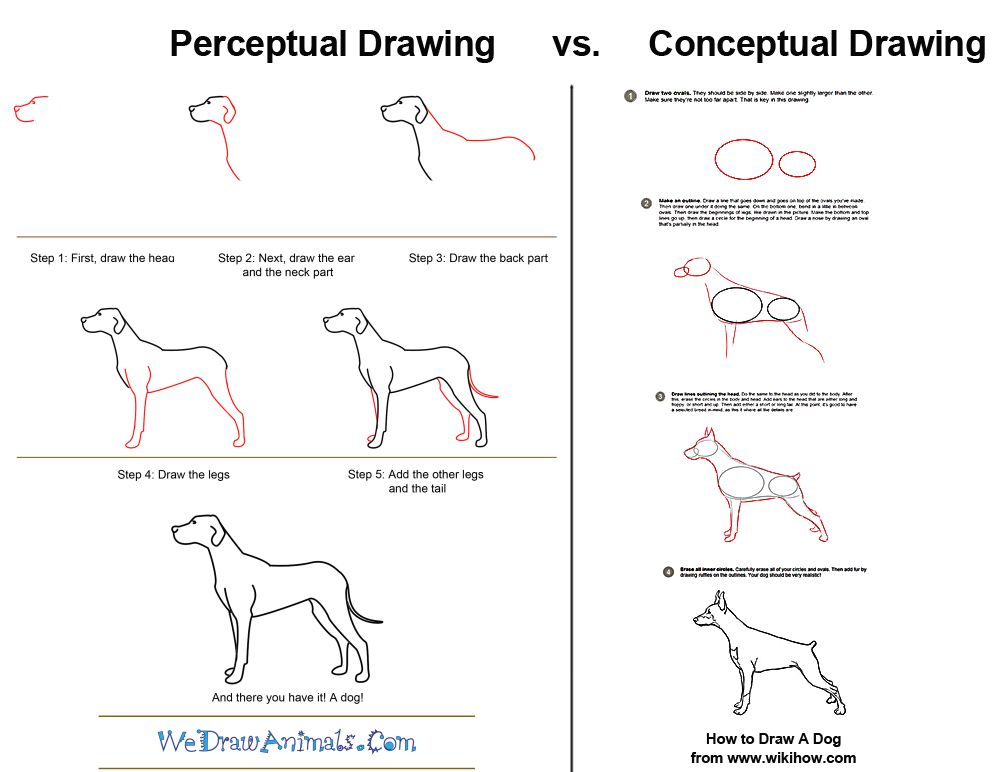
Source: Pinterest: Perceptual vs. Conceptual Drawing--two different approaches to drawing.
Common mistakes
- We tend to zoom in one small thing to omit a big picture. Always zoom out to check
- You are not only drawing the object, but also the outer space of the object.
- Don't adjust the bottom and top line to adjust the ratio. Always adjust things that inside your frame.
Different Values
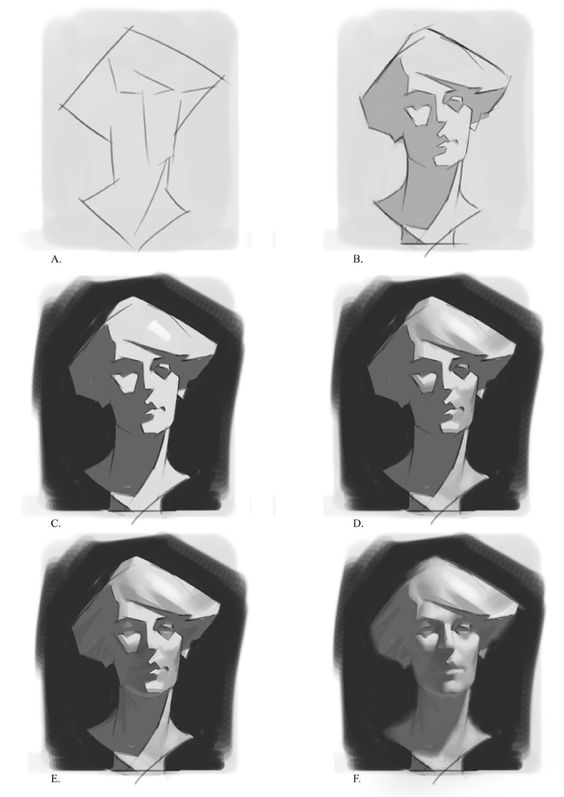
Source: Pinterest: the art vault
2 Level
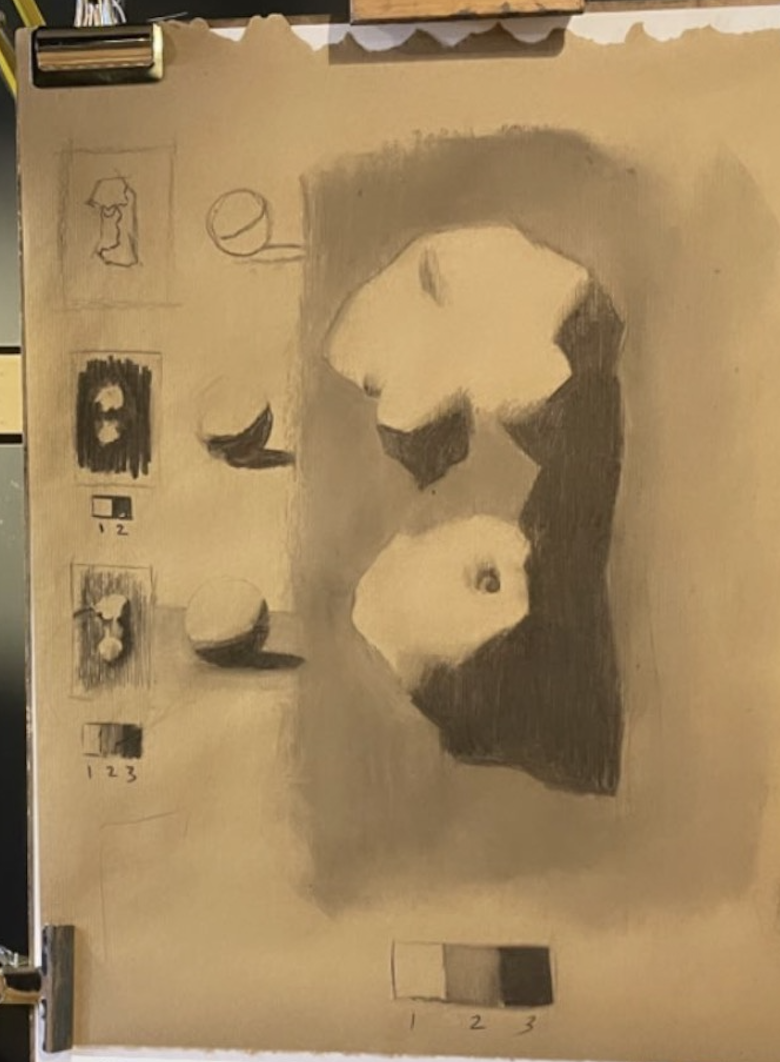
- Charcoal control
- Shadow, at this level. We only need to due with 2 level, black and empty.
- Find the shape of light and shadow
- Drawing the ratio right at the first place is so important before drawing the details
5 Level
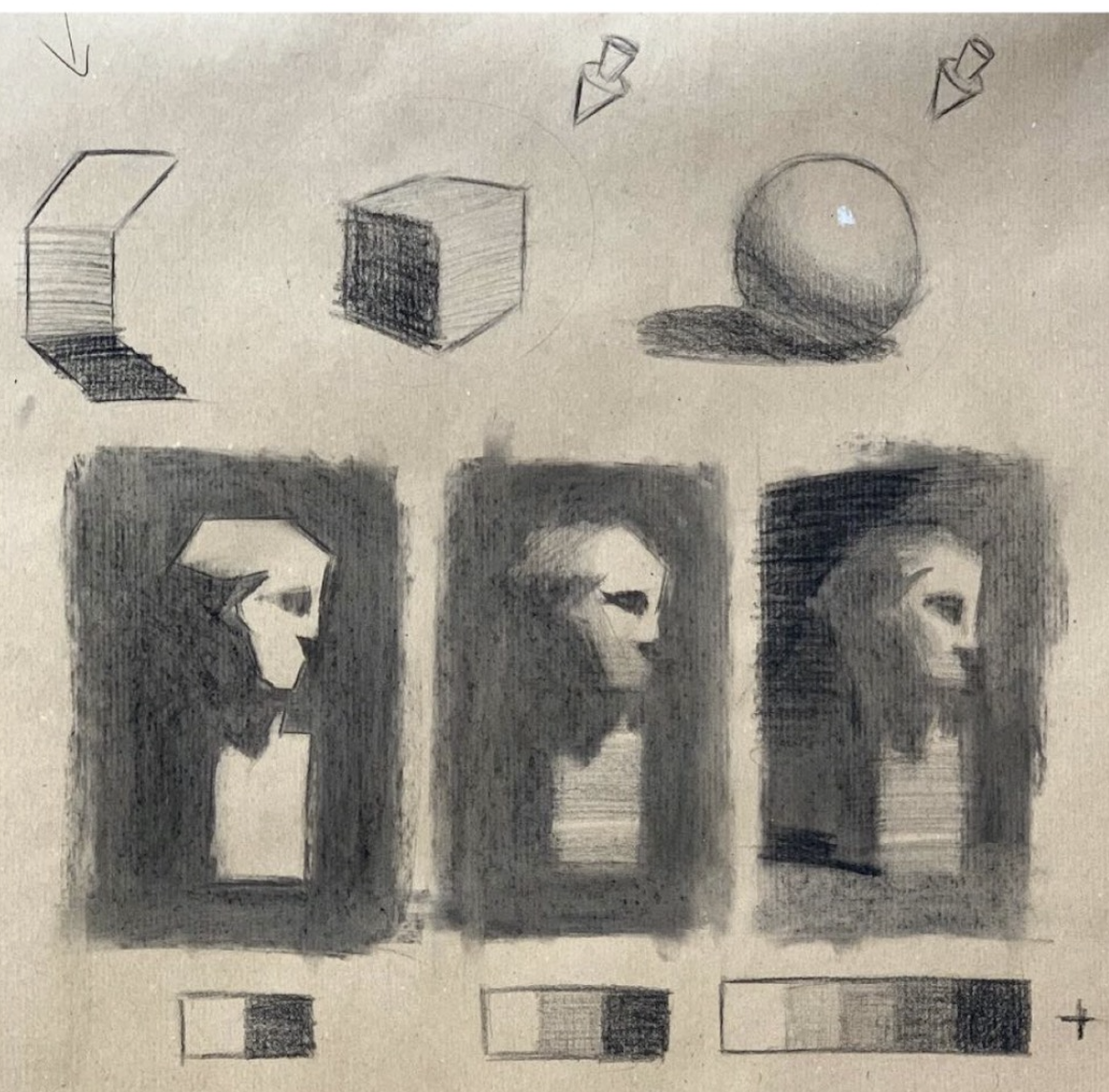
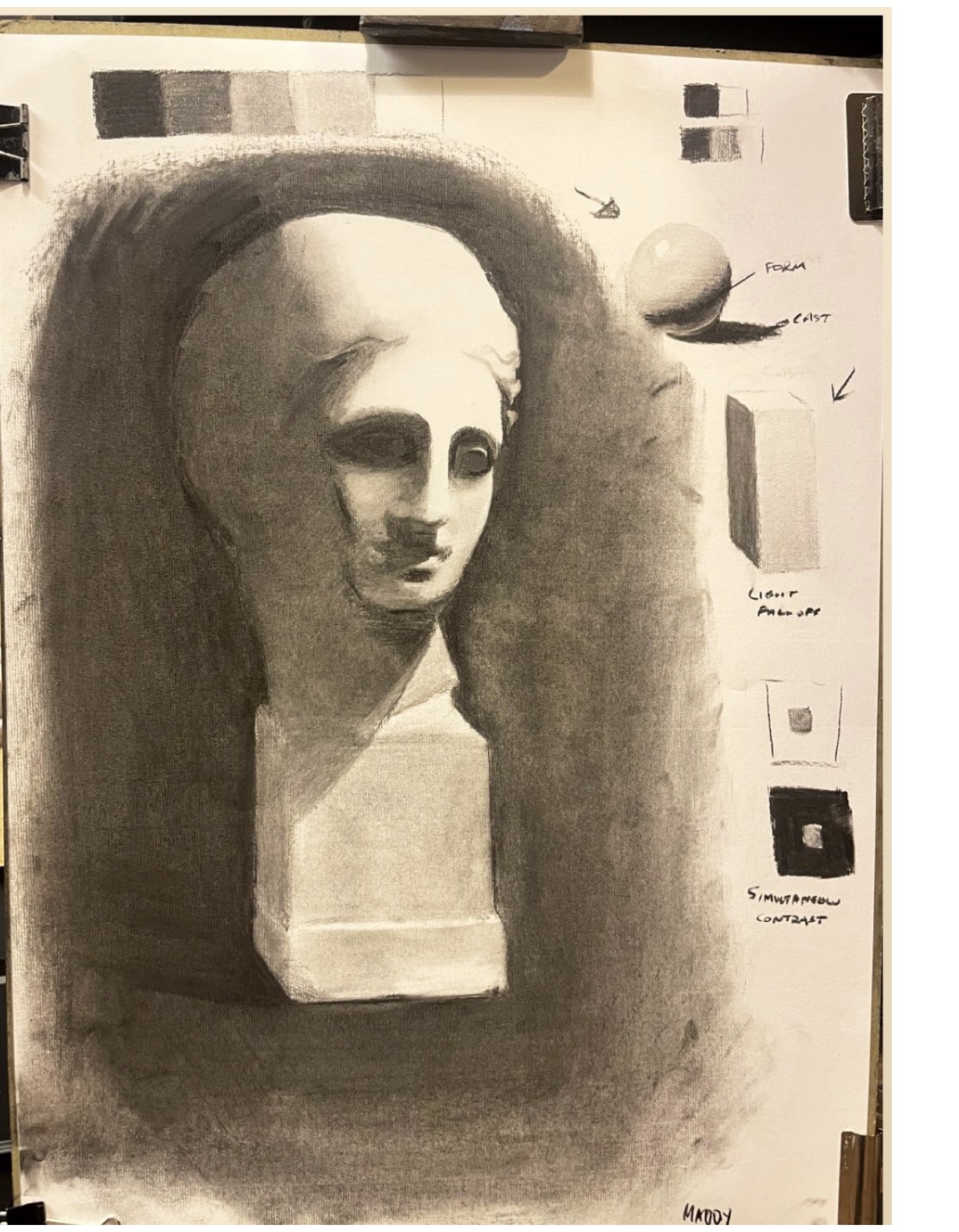
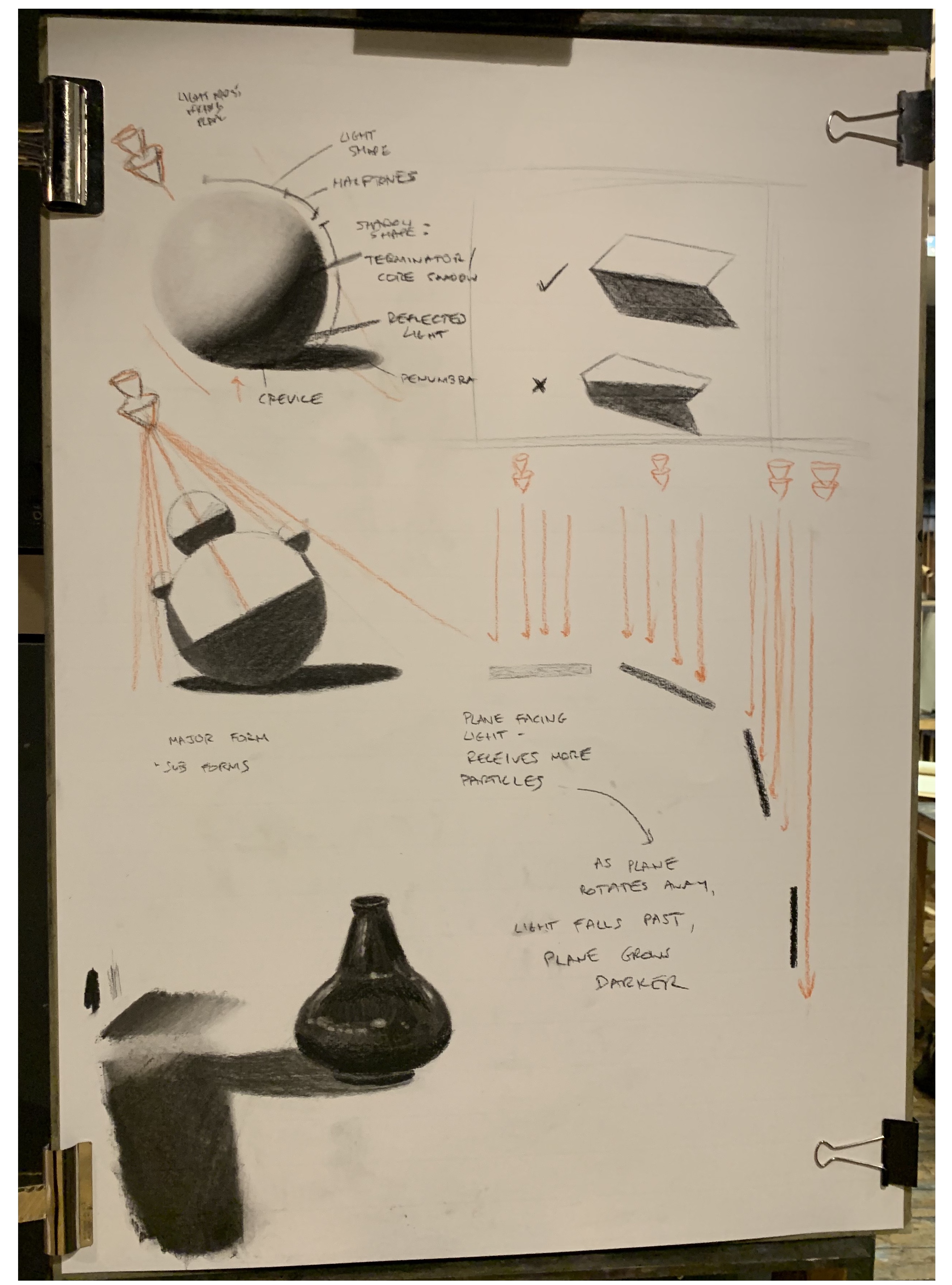
- light
- shadow
- reflection
Oil painting
- 3 things that affect colour
- Value is the most important thing in colour. take the colour off
- Hue (can be warmer or colder) 係指pallet direction
- saturation
- 畫筆可以做eraser
- if ur brush takes colours from the painting, you have to wrap it off
- 打橫筆觸makes the colour looks lighter. vertical makes it darker
- use new colour to cover the transition rather than make it fade 推開佢
- it is easy to make the colour darker but it is hard to make it lighter
Figure
Form shadow and Cast shadow
- Shadow shape = form shadow + cast shadow
- Form shadow is softer and Cast shadow is shaper
- Terminator = the edge of light
Form shadow is the area of an object that is turned away from the light source and appears darker. To create form shadows, you need to first determine the direction of the light source and where the light hits the object. Then, shade the areas that are turned away from the light using a darker value of the base color or by crosshatching or stippling.
Cast shadow is the shadow that an object creates on a surface when it blocks the light source. To create cast shadows, first, determine the direction of the light source and where it hits the object. Then, draw the outline of the cast shadow on the surface the object is resting on. Fill in the shadow with a darker value of the base color or by crosshatching or stippling.
Remember to consider the shape of the object and the surface it's resting on when drawing shadows. Shadows can also be affected by the environment, such as reflections or other sources of light. Practice and observation are key to mastering the art of drawing shadows.
Mid-tone
Mid-tone fall into the light and is the range of tones that fall between the highlights and shadows, and it is affected by the intensity and direction of the light source.
Steps
- Layer 1
- alignment (the most difficult - because you have to a tract real light object)
- 12-16lines approx
- complicated shape = put more lines
- simple shape
- layer2
- clarify overlay
- more fine
- Layer3
- light affect the form
- the form affect the light
- 2 values
- Layer4
- 3 values
- Layer5
- detailing shape and form
Notes
- one surface, one colour value
- different angles, look upward nose level becomes the same as eyes
- Look downward nose level becomes the same as month